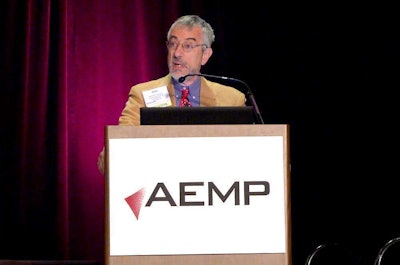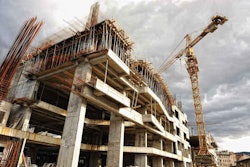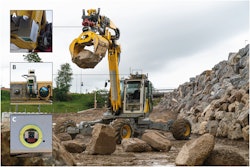 Simonson
SimonsonThe morning after Republicans won back the U.S. Senate, Ken Simonson, chief economist for the Associated General Contractors of America, said that conservative majorities in both houses of Congress are unlikely to spend money to improve the the country’s infrastructure, but that private construction will be robust.
The keynote speaker Wednesday at the 2014 Association of Equipment Management Professionals Asset Management Symposium in Nashville, Tennessee, Simonson said, “I think the election has mixed implications for construction. The Senate takeover by Republicans makes it even less likely that we’re going to get a highway bill with additional federal funding or an airport trust fund extension passed. And federal direct spending on building projects is likely to shrink even further.”
On the other hand, Simonson said, victories by Republicans in governorships “may encourage the spread of public-private partnerships and make it easier for economic development projects to go forward at the state level.”
Private construction to soar
Elections aside, Simonson told the some 300 attendees at the symposium that private non-residential is still the fastest growing segment of the construction economy. The three positive trends in the construction economy he cited were the “shale gale,” the Panama Canal expansion, and a residential construction revival, especially multi-family.
The so called “shale gale,” said Simonson, has its biggest impacts up and downstream from the actual drilling activity. This includes the boom in sand quarries, pipe fabrication, petrochemical plants, site prep, compressors, pumps, railcars, trucking and processing facilities, and it will continue to exert a huge, positive impact on the economy.
And while there are no U.S. firms doing construction on the Panama Canal, 16 U.S. ports are undergoing significant expansions and upgrades to be able to handle the Panamax ships. These will start sailing through the expanded canal in 2016, holding four times as much cargo as previous ships. The ports of Miami, New York, New Jersey, and Long Beach alone have spent more than $1 billion each in preparation for the bigger ships and increased cargo volumes.
Multi-family housing strong
In the residential market, single family construction is growing modestly, while multi-family is still strong, Simonson said. This trend is likely to continue, he said, because young people and recent college grads are having a hard time saving for down payments or qualifying for mortgages on single family homes. There is also a trend among young, potential home buyers to stay closer to urban centers, especially in areas where crime rates have fallen and schools have improved.
What areas of the construction economy are the most lucrative right now? According to Simonson they are: multifamily construction, manufacturing construction (especially petrochemical/oil and gas supply), oil and gas fields, pipelines, warehouses, lodging, rail and data centers—in that order.
Labor shortages loom
Since July 2010 construction spending has risen 24 percent, but it is still 21 percent lower than the peak in April 2006. One of the main challenges to further growth, Simonson said, was worker availability. More than 262,000 workers left the industry and have not returned to work in construction. The skills in shortest supply are equipment operators, carpenters, laborers, project managers and supervisors and estimators.
Simonson forecasts total construction spending to be up 6 to 10 percent this year. Construction materials costs increases will remain modest, up 1 to 3 percent. And labor cost increases will stay in the rage of 2.5 to 5 percent, but Simonson warns of widespread labor shortages due to retirements, fewer veterans and competition from other sectors.
From 2015 to 2017, Simonson predicts total construction spending will likewise grow 6 to 10 percent per year, almost all of that in the private sector. Public construction spending will continue to limp along or decline a small amount, he said.












